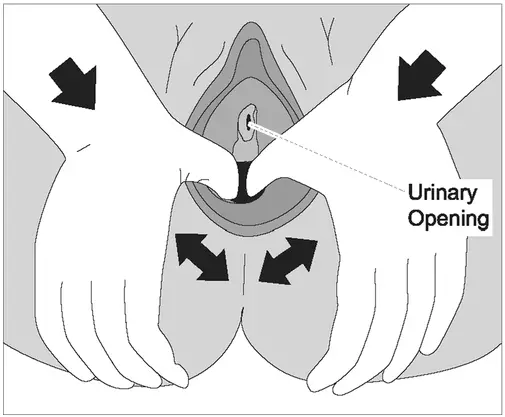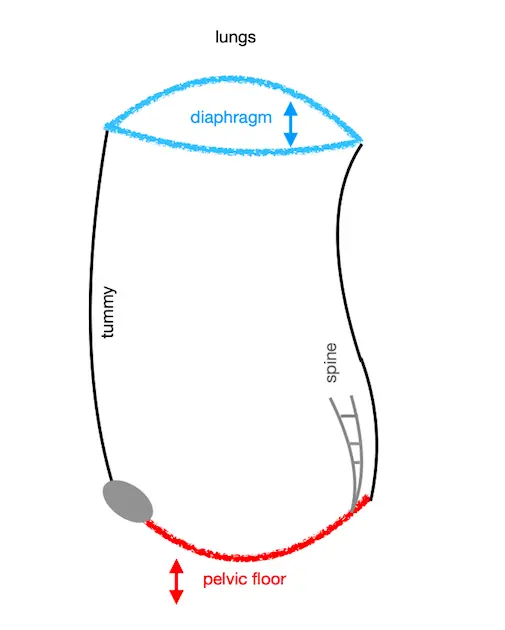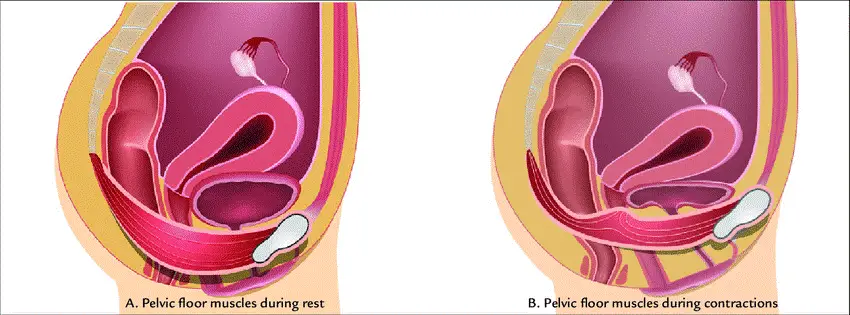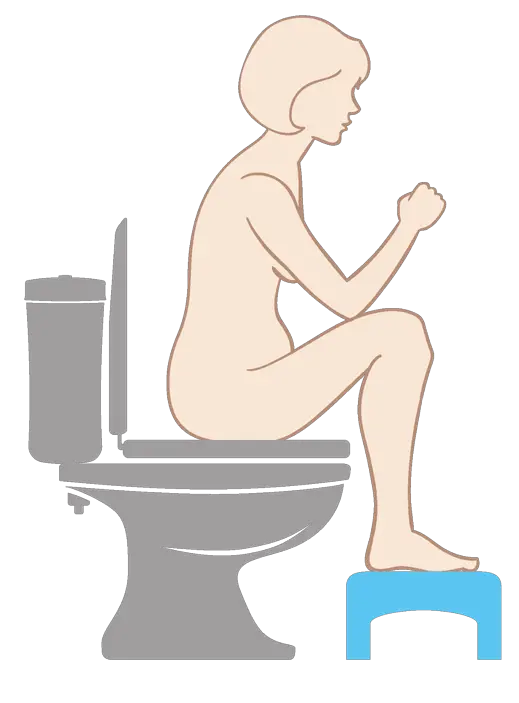With the postponement of the antenatal classes at Limerick’s maternity hospital and many health staff including physiotherapists redeployed as a result of the covid-19 pandemic, expectant mothers might be left with unanswered questions or fear of not knowing the right thing to do.
Chartered physiotherapist and Ennis native Aideen Coates-Farrell of YOUtherapies has some specialist advice to help you during the weeks and months between now and when your baby arrives.
Your antenatal perineal massage
The perineum is the area between your vagina and anus and is especially important for all women. During labour this area has to stretch greatly and often can tear. Perineal tears can lead to pain and problems with urinary or faecal control and pelvic organ prolapse.
Perineal massage is a way of preparing your perineum to expand more easily during childbirth and reduce the risk of these tears. This is especially effective for your first delivery. A 2013 review including 2497 women showed that doing perineal massage once or twice a week from 35 weeks lessened the likelihood of perineal trauma including the use of episiotomy (small surgical cut).
How to do perineal massage
Be in a position and place where you feel comfortable. After a hot shower and with empty bowels can be a good idea.
Having a mirror is useful so you can see the area.
First you can work externally: Place one or two fingers on the skin of the perineum and with pressure so your fingers don’t just slide on the skin massage and stretch the area.

Next you work internally: Put one or both thumbs on the back part of the vaginal opening so your hands/fingers will almost cup your bum.
Press your thumb(s) downward toward your back passage. Then with that pressure you move the thumbs side to side in a U- shape.
You should feel a stretchy sensation but don’t work so much that it is painful. You are trying to relax and let go of the muscles all the time. Your tolerance and the pliability should increase with practice. You can do as frequently as you like but typical clinical advice is once a day for 5 minutes.
It’s best to avoid perineal massage if you have any infection or virus such as vaginal herpes or warts. If you have a high risk pregnancy first check with your obstetrician.
Be cautious and discuss with a women’s heath physiotherapist first if you suffer with pain in that area for example with tampon use or intercourse.
Your breath and pain relief
Lots of cool physiological processes happen when you breathe. When you slow your breath down and breathe through the nose, in particular, relaxation is promoted. This happens as your body switches over to more parasympathetic nervous system activity. This ‘rest and digest’ activation leads to a drop in heart rate and blood pressure as well as a release of hormones, neuro transmitters and opioid like ‘drugs’ that provide natural pain relief.
This can be useful when dealing with pelvic girdle or back pain, labour pains and post-delivery soreness as well as aiding sleep.
How to breathe for relaxation
Sit or lie comfortably and first spend a minute or two just noticing what parts of your body move when you breath. Do your shoulders elevate? Does your head move? Does your belly lift? What sounds do you hear? Do you breath in and out your nose or mouth or both?
Next place one hand on your chest and the other on your belly. Keep breathing and notice if this has caused anything to change. There are no right or wrong ways. This is just to make you focus and be aware. This bit already can have effect on calming and slowing things down.

Next you will begin to direct the breath to fill the whole chest and the whole belly. Take the inhale as slow as possible. Avoid gripping or tensing your tummy. When you exhale through the nose (if possible) aim to make it long and slow – longer than the inhale if you can. Repeat these slow rhythmical breath cycles as long as necessary.
It can be challenging especially at first to keep your focus. Work with little amounts until you find it creates calmness or relief.
There is some evidence to suggest that relaxation techniques such as breath work, yoga, music and mindfulness may help pain management during the labour. So if you intend to use any of these techniques for the birth is can be useful to practice them at home when you are doing your perineal massage for example and in your intended labour positions. The brain and whole system makes associations and connections and responds then in a learned way (think Pavlov’s dog) so you get a similar reaction the next time even if the scenario is slightly different
Your pelvic floor function
Another benefit of the breath work as discussed above is the effect it has on your pelvic floor.
Picture a balloon. This is your tummy area. The top of the balloon is your diaphragm (the muscle at the bottom of the lungs) and the bottom of the balloon is your pelvic floor muscles. When you inhale the diaphragm contracts, flattens and moves downward. Imagine a pressing down on the balloon. With that change in pressure the base of the balloon, your pelvic floor muscles, will lengthen or stretch. As you exhale the reverse happens and your pelvic floor can naturally lift up and contract. It’s almost like a reflexive lift similar to if you jump on a trampoline you would spring upward. The pelvic floor should react like that to the downward pressure. So to strengthen your pelvic floor you would do your squeezes as you breathe out.
Don’t think that because you are preparing for birth that you should no longer strengthen your pelvic floor. Training your pelvic floor during pregnancy does not have any effect on the risk or incidence of perineal trauma, episiotomy or instrumentation/caesarean deliveries. In fact a large body of evidence shows that pelvic floor muscle training done antenatally reduced rates of incontinence in the later stages of pregnancy and up to 6 months after.
How to train your pelvic floor muscles
You can activate your pelvic floor muscles in any position you may find side lying a good place to start building up to antigravity positions and during functional tasks like lifting or running.
First picture your pelvis like this picture and imagine the pelvic floor is like a sling or hammock sort of doming downwards then visualise what would happen the hammock if the ropes at each end were pulled up – the hammock or your pelvic floor will rise and lift.
Breathe in and let the belly swell then as you exhale tense the muscles around your back passage (anus) like you don’t want to pass wind. This gives the most effective contraction.
You should feel a noticeable tension inside and underneath the pelvis. Try to hold for as long as you can with the goal of holding for 10 seconds and doing that 10 times. You then repeat the exercise 3 times a day. Ensure that in between each repetition you allow a moment to release and relax the muscles back down. Taking a full breath cycle will help that.
You should also work on tensing the pelvic floor muscles quickly and strongly as you can and let go as you inhale. Also repeat this 10 times 3 times a day. This “knack” is useful for if you find you leak when coughing or sneezing.

Your toilet habits
After all the work on strengthening and relaxing your pelvic floor the last thing you’ll want is to have something like constipation (which is common in pregnancy) ruin your good work. Straining when on the loo can cause stress on the pelvic floor muscles and lead to things like haemorrhoids (piles) or pelvic organ prolapse (where bits that should be high up inside the pelvis drop downwards). The best plan is to prevent constipation through exercising regularly, drinking lots of water and eating a good balanced diet including plenty of soluble fibre as a start point.
When you feel the urge to open you bowels you should go and allow yourself time to go. Don’t rush yourself. Do not put it off until later.
How to poop

Raise your feet up onto a little stool or even two toilet rolls so that your knees are higher than your hips when sitting on the toilet. Lean forward with a flat back and rest your elbows on your knees. You should bulge your tummy outwards not tensing it in. The motion might begin already with this action. If not you might need to breathe in to swell the tummy out more and then blow out like blowing out candles or say Moooooooch. Then inhale again and repeat a few times. Do not hold your breath. If after 10 minute nothing has happened leave it and wait for the next urge.
More information and article references available on request by emailing Aideen at youtherapies@gmail.com.
















